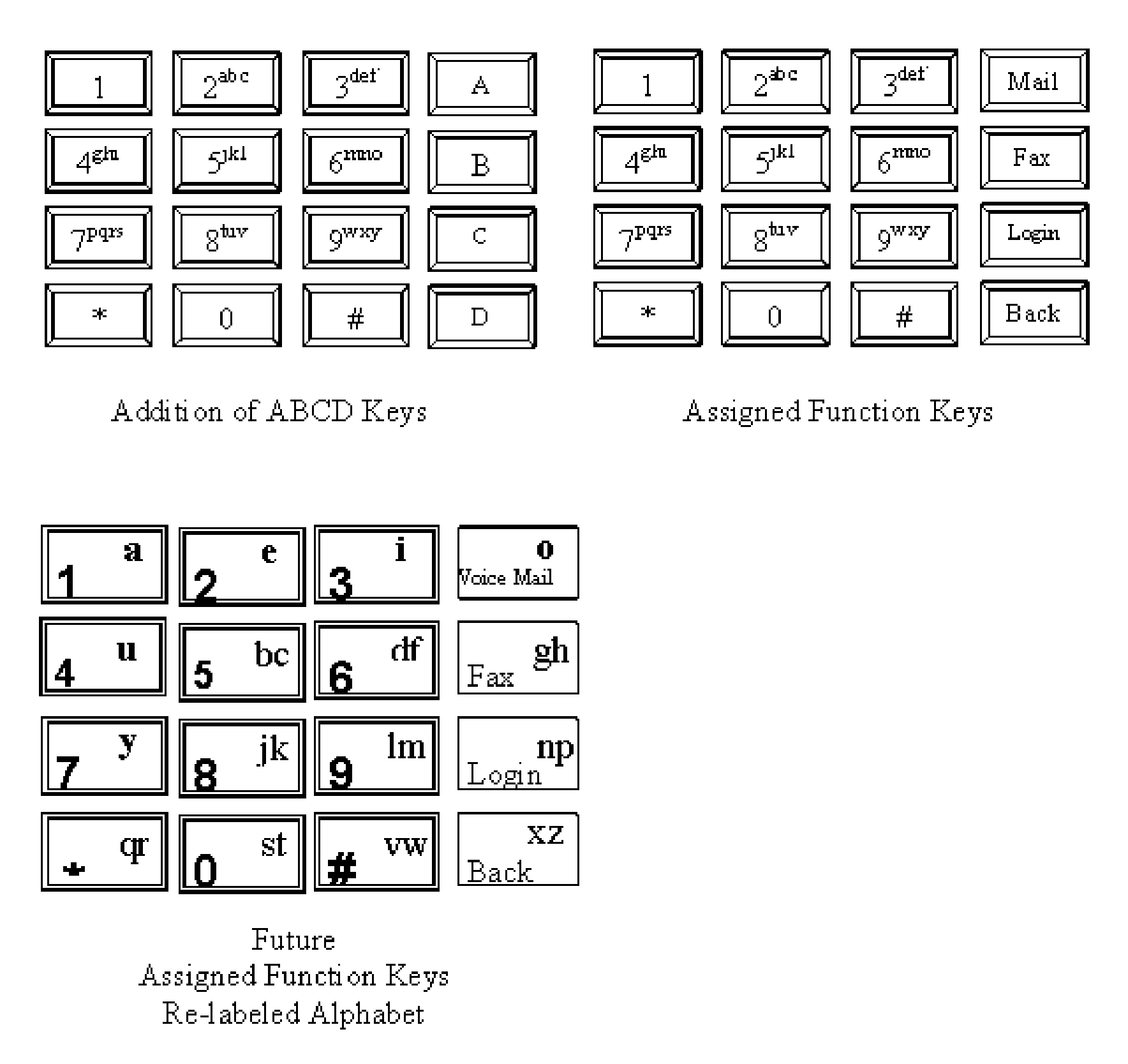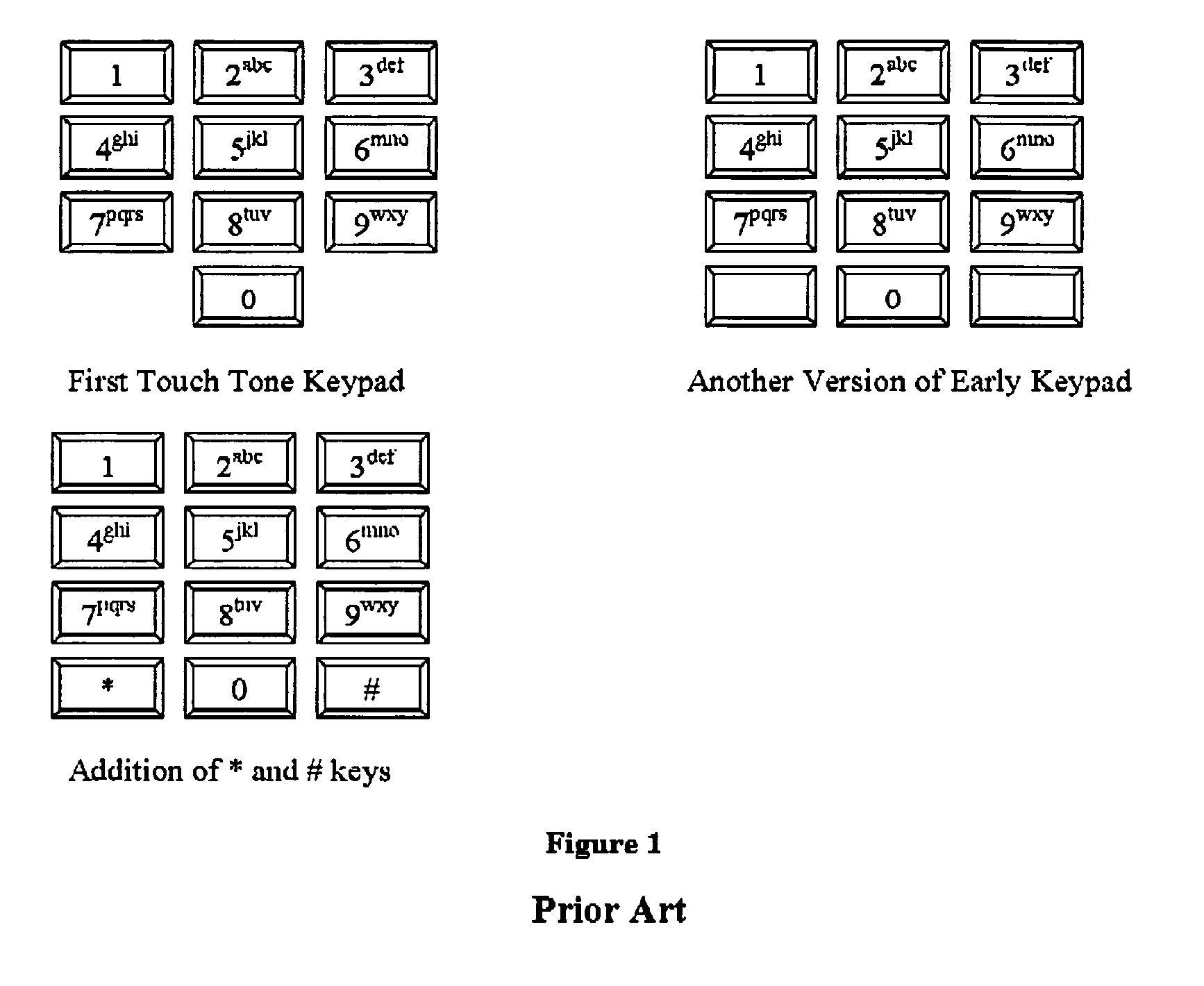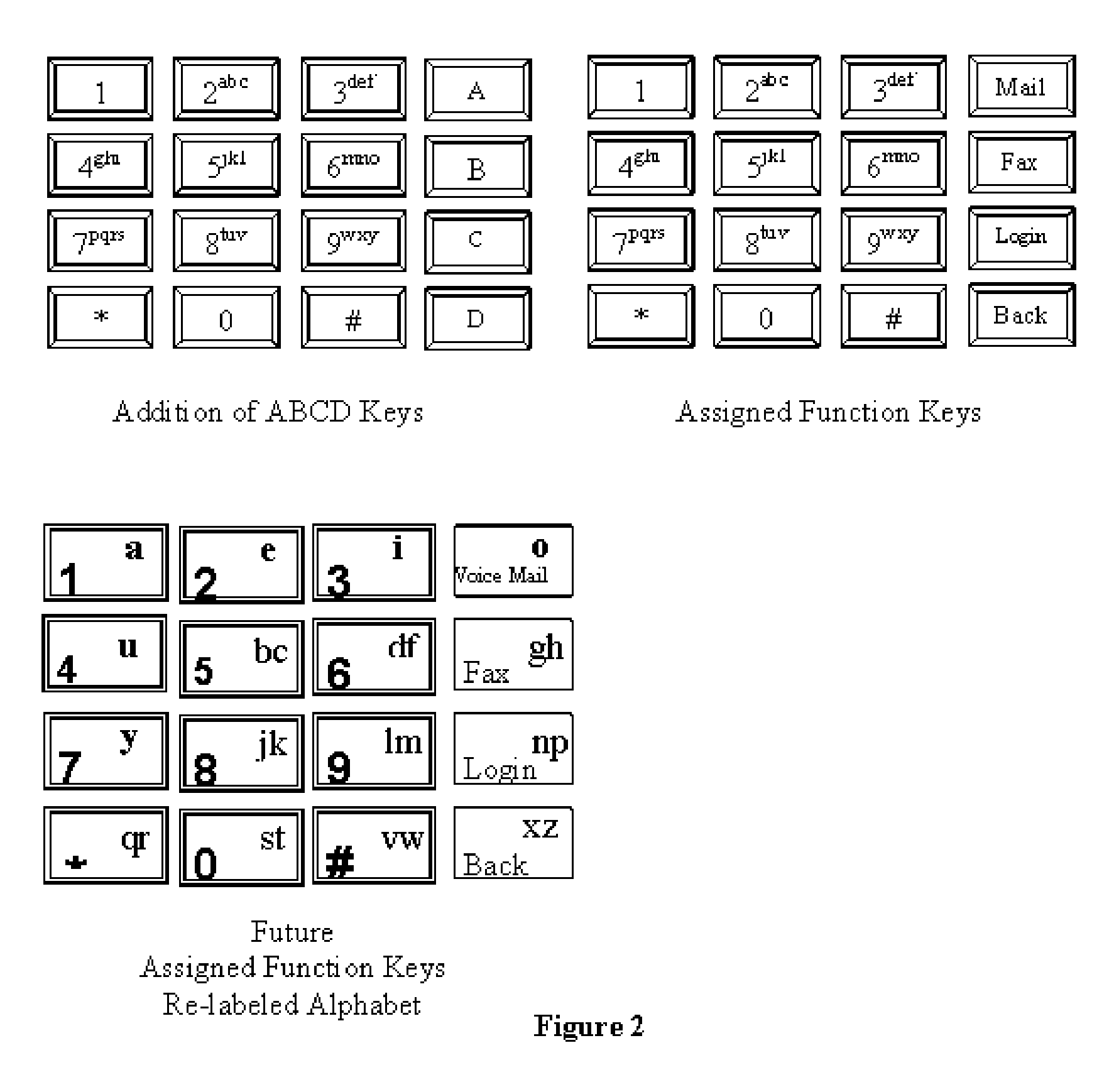Enhanced user functionality from a telephone device to an IP network
a telephone device and user functionality technology, applied in the field of enhanced user functionality, can solve the problems of no provision in the telephone central office for public use of abcd tones, and the telephone devices in the public arena do not have keys to generate abcd tones, so as to achieve the effect of convenient use of the keypad
- Summary
- Abstract
- Description
- Claims
- Application Information
AI Technical Summary
Benefits of technology
Problems solved by technology
Method used
Image
Examples
Embodiment Construction
[0142]In FIG. 2, the additional keys to go from 12 to 16 DTMF tones are shown. They are depicted in a 4th column arrangement to the right of today's ubiquitous 3×4 matrix keypad, thus the origin of its nomenclature. On normal low priced telephones, a standard ABCD label may be used. On more sophisticated electronic phones including mobile phones, these keys may have variable labels as shown in FIG. 2 for functional usage depending on the application that the user is in. The last layout of FIG. 2 shows a complete example of 1) maintaining the 12 key matrix but allowing for functional labels and a total re-labeling of alphabetic characters; 2) a single key for vowels and y. Re-labeling will be a difficult task as many legacy computer programs would have to be modified much like the Y2K scenario which cost businesses tremendous amounts of time and effort. But progress demands change and possible this is one area for consideration. Possibly there will be more keys added to utilize even ...
PUM
 Login to View More
Login to View More Abstract
Description
Claims
Application Information
 Login to View More
Login to View More - R&D
- Intellectual Property
- Life Sciences
- Materials
- Tech Scout
- Unparalleled Data Quality
- Higher Quality Content
- 60% Fewer Hallucinations
Browse by: Latest US Patents, China's latest patents, Technical Efficacy Thesaurus, Application Domain, Technology Topic, Popular Technical Reports.
© 2025 PatSnap. All rights reserved.Legal|Privacy policy|Modern Slavery Act Transparency Statement|Sitemap|About US| Contact US: help@patsnap.com



